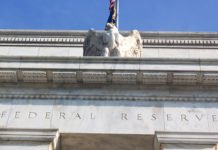The FOMC members had quite extensive discussions on the balance sheet policies, the minutes revealed. US Treasury yields declined as the market interpreted Fed’s phasing out of the reinvestment policy might be a de facto tightening measure, reducing the urgency to hike interest rates. We expect the Fed might begin balance reduction in as soon as December 2017. The minutes also unveiled that the rationale behind the March rate hike was the solid economic growth developments. The members acknowledged that the labor market strengthened further in January and February and that real GDP was continuing to expand in the first quarter. The moderation in growth from the fourth quarter was mainly driven by ‘transitory factors’.
Regarding the balance sheet policy, the members reaffirmed the approach to balance sheet normalization articulated in the Committee’s Policy Normalization Principles and Plans announced in September 2014. They agreed that any reduction in securities holdings should be ‘gradual and predictable’ and accomplished primarily by phasing out reinvestments of principal received from those holdings. The minutes also noted that nearly all participants preferred that the timing of a change in reinvestment policy depend on an assessment of economic and financial conditions, as opposed to a quantitative target on the level of the federal funds rate or a qualitative assessment of economic conditions and risks. Finally, most participants anticipated that a change to the Committee’s reinvestment policy would likely be appropriate later this year if the Fed’s outlook was realized.
There were also discussion over the usages of the balance sheet policy and interest rate policy, Most members agreed that the interest rate policy ‘should be the primary means for adjusting the stance of monetary policy when the federal funds rate was above its effective lower bound’. ‘A number of’ participants noted that the asset purchases should be used ‘if substantially adverse economic circumstances warranted greater monetary policy accommodation than could be provided by lowering the federal funds rate to the effective lower bound’. Meanwhile, ‘some participants’ believed it is appropriate to ‘restart reinvestments’ if the economy ‘encountered significant adverse shocks that required a reduction in the target range for the federal funds rate’.
The members remained uncertain over the inflation outlook. As noted in the minutes, ‘several’ participants noticed that inflation had not picked up despite a strengthening in the labor market, while ‘some other participants’ were concerned that ‘a substantial undershooting of the longer-run normal rate of unemployment, if it was to occur, posed a significant upside risk to inflation’. Regarding how the monetary policy should react to the uncertainty, ‘a few members expressed the view that the Committee should avoid policy actions or communications that might be interpreted as suggesting that the Committee’s 2% objective was actually a ceiling’.












